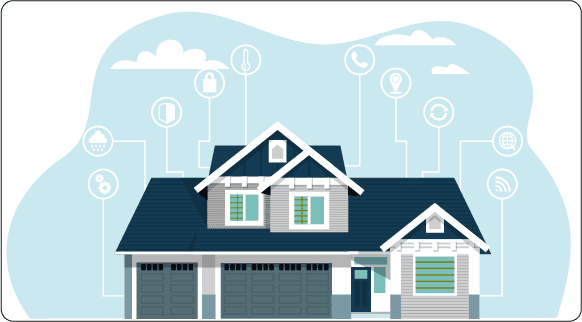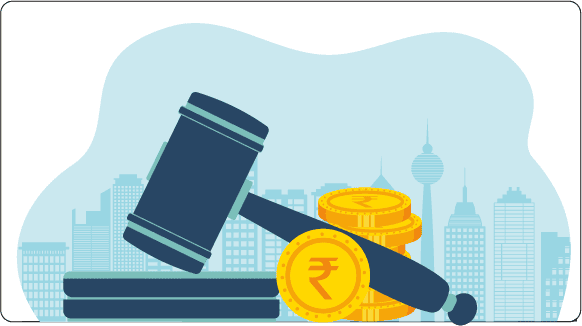Transforming the Slums of India

The citizens of India are given the right to choose where they live and the right to free movement across the country.
According to the India Housing Report, around 100 million people dwell in the slums on the outskirts of India’s highly developed cities. How was such a division in demographics created, if people are “free” to choose where they live?
The lack of dwelling space, unavailability of clean and healthy drinking water, poor healthcare and education systems, etc. are still prevalent in various parts of the country. This is because the developing cities are unable to provide these necessities and rights to all of their residents due to the rapidly rising population.
This rise in population is due to the high increase in interstate migration, which causes further division and the formation of more slums. The number of interstate migrants is about 60 million, as per the economic survey conducted by the Government of India. Even the developed cities in India are not equipped for such a high inflow of people, resulting in their dwelling in congested spaces. 50% of today’s world population is said to be living in cities and the figure is projected to rise to 70% by 2050. Quite a big portion of the global city-dwellers are found to be residing in areas that can be classified as slums.
The country must focus on developing housing and employment of slum-dwellers to create a socially healthy city and a safe and advanced ecosystem.
A Case Study from Mumbai’s Dharavi Area

India’s growth in the recent path has made us witness a great amount of migration of labour forces from its rural centres to urban centres, transforming themselves from being mostly agricultural workers to being service and industrial workers. But why does this happen?
Simply put, even a very poorly-paying job in Mumbai is more profitable and sustainable than being a labourer at a farm plot in a village with no proper system for electricity or water.
Unfortunately, the urban system of the country found itself approaching a breaking point because of this massive inflow of people, creating larger slums as time progressed.
As urbanisation progresses rapidly, people from all parts of the country would continue to flock to the developing centres. 230 million people are projected to move to the cities in the next two decades in India.
The financial capital of India, Mumbai, is home to some of the most expensive real estate properties and at the same time, home to the people of Dharavi, the largest slum in Asia. Something that we can observe when we look at a city as vibrant and alive as Mumbai, is that development keeps progressing in the already advanced areas rather than in the underdeveloped slums.
A major reason why investors are reluctant to invest in slums is that the property values are often reduced due to the lack of formal titles and legal recognition, the insufficiency of physical infrastructure services and fragmented land ownership.
This forces them into investing in high-value properties for their financial security. Further development causes more people to be unable to afford living expenses and be displaced. For this loop to be broken investors must be encouraged to take risks.
What’s the Solution?
Developing the slums into inhabitable, healthy and hygienic areas is an undergoing process in India. Providing basic healthcare, nutrition, access roads, housing, sanitation, education facilities etc. are prioritised by the people working to make better changes.
Empowering the slum-dwellers, both men and women, into earning can be done by providing opportunities to acquire new skills and training. The government has launched various slum development programs like the National Slum Development Programme (NSDP), Integrated Housing and Slum Development Programme (IHSDP), etc. to achieve this goal.
From a real estate point of view, the government should form more practical incentives for developers to take the bigger risks of investing in less promising lands within slums. Subsidised onsite redevelopment is a strategy that takes advantage of the potentially high real estate value of slum lands in cities.
Slums are demolished and substituted by higher density housing and the dwellers are rehoused in the replaced housing at no extra cost. This is made possible as new market-rate housing is also developed in the former slums, which cross-subsidises the cost of the replacement housing project and provides a financially practical opportunity for the developers.
The government is required to approve changes to the city’s land development regulations to allow the increase in the density of redevelopment projects, along with providing financial assistance and temporary accommodation for residents and solving disputes.
To Summarize
The history of urbanisation in many large cities started with poor living conditions and gradually upgraded to affordable housing and basic public facilities.
A framework to continuously develop sustainable infrastructure has to be made by the government through efficient and innovative ideas. While rapid urbanisation contributes highly to the formation of slums, it is not logical to slow down or take a step back, but rather go forward with more energy so that the urban centres may be equipped to house the people in healthy conditions.
Slum-dwellers should be encouraged and educated to solve their problems by providing them with the necessary opportunities and financing through charities and NGOs. While focusing on further developing the developed cities, the country should also actively work to rebuild the slums, as well. A complete solution to this would have to involve better infrastructure, schools, job opportunities and the overall quality of life in India’s small towns and rural centres.
Unfortunately, little changes have been made in renovating the slums of India despite the efforts taken so far. The solution strategies remain the same, but the social and economic conditions have improved over the years, especially after the pandemic, and the country and the people have realised why this is important.
So, all that is required to reach the goal is additional enthusiasm in working towards transforming the urban landscape of India.

Unlocking the Power of Feng Shui in Real Estate: A Guide to Harmonizing Your Home
The rapid industrialization in India has continuously given rise to slums. In order to alter the country’s urban landscape, its...
Fire Norms Documented in National Building Code (NBC)
The rapid industrialization in India has continuously given rise to slums. In order to alter the country’s urban landscape, its...
Basics & Objectives of NGDRS
The rapid industrialization in India has continuously given rise to slums. In order to alter the country’s urban landscape, its...
What is External Development Charges (EDC)?
The rapid industrialization in India has continuously given rise to slums. In order to alter the country’s urban landscape, its...
An Overview of Street Vending in India
The rapid industrialization in India has continuously given rise to slums. In order to alter the country’s urban landscape, its...
Mumbai-Ahmedabad Bullet Train Project
The rapid industrialization in India has continuously given rise to slums. In order to alter the country’s urban landscape, its...
New Ideas for Real Estate Marketing in 2023
The rapid industrialization in India has continuously given rise to slums. In order to alter the country’s urban landscape, its...

















